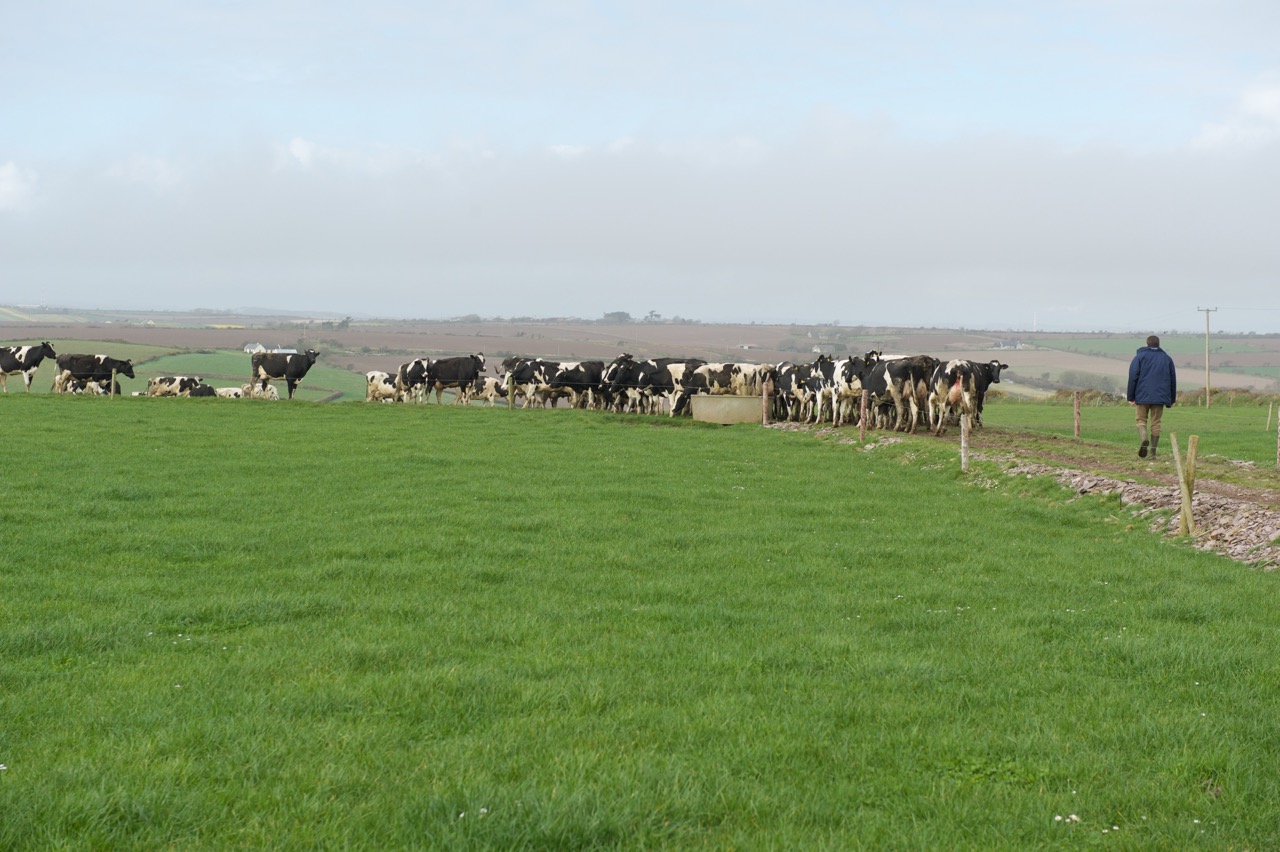However managing digestive upsets at turnout is not without its difficulties. If not properly managed, the variability in grass quality and in grazing conditions can lead to poor intakes, reduced yields, reduced butterfat, loss of body condition and poor fertility. These problems can be minimized by a number of strategic interventions including gradual turnout, buffer feeding and the use of Actisaf live yeast.
Each day spent grazing spring grass with parlour supplementation provides a saving of £1.12 (€1.32)/cow/day when compared with a typical indoor diet. This equates to a saving of £112 (€132) per day for a 100 cow herd.
While grazed grass may be the most cost effective feed available to ruminant livestock, it is not without its limitations and challenges and can end up causing nutritional and metabolic problems if it is not monitored and managed correctly. The daily nutrient analysis of grass can fluctuate considerably from day to day in terms of moisture, crude protein, sugars and fibre content. This constant variation, which is highly weather dependent, makes it much more difficult to balance grazing diets compared to winter diets. Varying grass dry matters can reduce dry matter intake.
Excess crude protein in the diet due to grazed grass (22% +) which is rumen degradable can lead to ammonia toxicity in the rumen leading to higher than normal blood urea nitrogen levels which can result in excess weight loss in early lactation, ketosis, a drop in milk yield and solids, lameness and infertility
Highly digestible lush grass can contain relatively high sugar levels (in excess of 15%) which are rapidly digested by the rumen microbes. For example, a cow consuming 17 kg DM of grass at 15% sugars will be consuming the equivalent of approximately 22 kg of fresh fodder beet and this is before any concentrate feeding in the parlour. This rapid fermentation of sugars causes a sudden drop in rumen pH to below 6.0 and an overproduction and, consequently, an accumulation of lactic acid.
The resulting subacute rumen acidosis (SARA) has a serious detrimental effect on the rumen microbes which digest the feed and release energy from it, which is subsequently absorbed and utilised by the cow for maintenance, production and reproduction.
A further issue that arises with lush digestible grass is that it lacks structural fibre which further compounds the effect of high sugars in the rumen. This lack of fibre results in an absence of “rumen scratch factor” which is essential to instigate ruminal contractions and also the production of saliva. This saliva normally neutralizes the acidity in the rumen and maintains pH above the threshold of 6.0.
SARA at grass will limit feed intake. This will result in a reduction in butterfat yield and will lead to excessive weight loss for cows in early lactation. It is often exacerbated by concentrate feeding in the milking parlour, particularly where compounds are formulated to contain relatively high inclusions of rapidly degradeable starch.
Monitoring physical parameters such as rumen fill, dung consistency and rumination rates of cows are key to identifying SARA at grass. SARA will reduce intakes which can lead to poor rumen fill (that is cows looking empty) and subsequently reduced yield. Loose dung with gas bubbles present is also indicative of a potential SARA issue as is low rumination rates in the herd. Greater than 65% of the herd should be lying down chewing the cud at any one time. Keeping a close eye on the milk recording sheet is also vital to identifying SARA. A fall in butterfat % of 0.3% or greater in one week is a warning signal and a decline in milk protein percentage of greater than 0.3% over the course of one week is also a warning signal.
There is no doubt that grazed grass has a large role to play in the diet of dairy cows providing weather conditions allow grazing. However, to overcome a number of the issues listed throughout this article one must consider strategically buffer feeding cows, particularly during times of grass shortage or wet weather. Highly digestible grass silage or maize silage are an ideal buffer. Moist feeds such as brewers grains and Trafford Gold can also be helpful. Feeding a compound feed that contains a balanced mix of starch, sugars and digestible fibre and therefore complements feeding at grass is of crucial importance.
Feeding Actisaf Sc 47 live yeast to dairy cows prevents and eliminates SARA at grass. Actisaf scavenges oxygen from the rumen which in turn stimulates lactic acid utilizing and fibre digesting microbes. This has a twin effect of increasing feed conversion efficiency but, more importantly, at grass it provides a buffering effect.
It does this by creating a rumen environment in which lactic acid utilizing microbes can mop up the excess lactic acid and convert it to a usable energy source (propionate) which optimizes milk yield.
Spring grass can be a cheap energy and protein source for dairy cows. To maximize the benefits and decrease the risks, it is essential to monitor cows’ yield, body condition, rumen fill, and dung consistency. The biggest risk comes from excess protein and SARA. Be prepared to strategically buffer feed, to feed lower protein and lower starch compounds that contain higher levels of digestible fibre. Including Actisaf Sc 47 in the diet of grazing dairy cows increases the digestion and utilisation of grass while also buffering the rumen, which is essential to promote rumen function and health in your dairy herd.

